DATE: April 13, 2018
INSTRUCTOR: Frank Proctor
WHERE: Way of the Gun/Frank Proctor Shooting Range, Eastaboga, Alabama
MY EQUIPMENT: Custom built “Underground AR-15” with BCM 14.5” ELW upper. Vortex Strike Eagle 1-8x scope. Shooting Precision Delta 55gr .223 ammo.
I have only taken one “formal” carbine class and I wanted to brush up on that skillset this year. At the same time, I had never had access to any shooting range with more than 100yds to shoot an AR-15. So, when the opportunity to take a Frank Proctor rifle class presented itself this year, I jumped on it.
I’ve written much about the “do-it-all” AR-15 setup that I like and this was a perfect class to get more training from a real expert like Frank Proctor on how to do it right. Here’s the class description from Frank’s website:
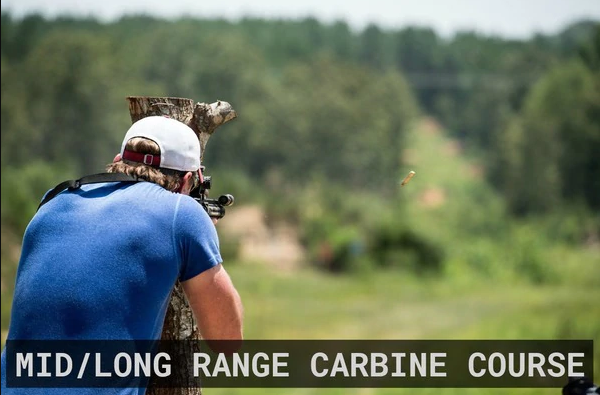 Class size is limited to 15 shooters. This allows shooters to receive more information and get more quality reps in less time.
Class size is limited to 15 shooters. This allows shooters to receive more information and get more quality reps in less time.
This course will focus on using the AR-15 at rifle distances from 50-650 yards from natural terrain shooting position (cars, boulders, trees, etc.) I have 3 rifle ranges with over 100 steel targets on them ranging from 6” to 12×24” The course will focus on hitting those targets, Fast Accurate Easy from natural terrain shooting positions Expect some fun and challenging shooting and some moving around!
I recommend a variable power optic and a carbine weighing less than 10 pounds. 5.56/.223 only. Any ammo you want to shoot is fine including green tip. I would recommend that the gun and ammo shoot under 2moa. We will zero/group at the beginning of the course.
Equipment list
Bring what YOU need to shoot and take care of your body during an active and fast paced day on a range outdoors.
I recommend a variable power optic and a carbine weighing less than 10 pounds. 5.56/.223 only any ammo you want to shoot is fine including green tip. I would recommend that the gun and ammo shoot under 2moa. We will zero at the beginning of the course. I have a minimalist approach to guns, gear and training; I would recommend you come prepared to travel light around the range. All shooting will be done from natural terrain, no bipods, sandbags etc. A small backpack would be advised. DO NOT BRING PISTOLS
600 rounds rifle ammo minimum.
STUDENTS WILL RECEIVE COMPLEMENTARY FRANK PROCTOR CARBINE DVD PRIOR TO THE COURSE. It is recommended to review the material prior to the course so that your range time can be more productive.
After registration, students will receive an email with further information including schedule, range location area information, etc.
A Full Day of Rifle Training
In short, the class was exactly as described…
The facility was Frank’s private range in Eastaboga, Alabama that he recently upgraded to have the much longer (500+yds) targets on. This is what made it such a great experience and the perfect location for this course.
The day started with everyone meeting at Frank’s pro shop/club house. Once together, Frank gave a general overview of the day, talked a little about gear, went over the safety rules and those types of details. Then we hit the range…
We started by zero’ing at the 50yd line. I came to class with a pretty close 50yd zero, but Frank gave some great advice one how to have a more precise zero that I took advantage of. I had also flown in for the course, so I bought the same ammo that Frank recommends on his website when I got there – the Precision Delta 55gr .223 ammo – so I needed to adjust my zero a bit for that.
A note about ammo, with .223 – generally I would prefer the heavier ammo (62gr+) because it tends to have better terminal effects and performance at distance, but I wanted to shoot “cheap” 55gr ball ammo at this course, just to see what could be achieved with it. I think that was a good decision, but later I thought about it and I should have brought at least a few magazines or boxes of the premium self-defense ammo I usually run (either 62gr or 75gr Speer Gold Dot) and some long range ammo (MK262 clone 77gr ammo) – just to see the difference in accuracy, etc. I’ll do that next time the opportunity presents itself.
Getting everyone zero’ed took most of the morning. Then, before lunch, Frank also shot everyone’s rifle through a chronograph so we could work up a “dope” later using ballistic software if needed. Frank explained how knowing the velocity of your given ammo in your given rifle (it was different for everyone!) was important to use your scope’s ranging features — no matter if you have a BDC (bullet drop compensating) reticle, or you’re using MOA or MILs, or anything else.
It should be noted that even during the zero process, equipment issues and limitations were already presenting themselves for some shooters. For example, there were a couple dudes that carried a gun for a living and their employer had recently switched from red dots to low-power variables, which is a step in the right direction. However, they were using Steiner 1-4x optics, which worked great—except even at 50yds the precision that you want for a 50yd zero was hard to achieve. The guys with the 1-6x and 1-8x scopes, like me, had an easier time zooming in and getting a more precise zero. The fact is that more magnification won’t make you shoot better, but you definitely can’t shoot what you can’t see.
Frank advocates a 50/200 yard zero because it makes getting practical (0-300+yds) hits with your AR-15 super simple. You basically put the dot on what you want to hit and shoot it. The picture below is from Frank’s private video subscription service, but it shows an example of how to properly zero at 50yds – using a precise aiming point of just one corner of a 1 MOA square (There was nobody with red dots in this course, but even for the guys with the 1-4x scopes, it was hard to see this level of precision with the magnification and dot size in those scopes):
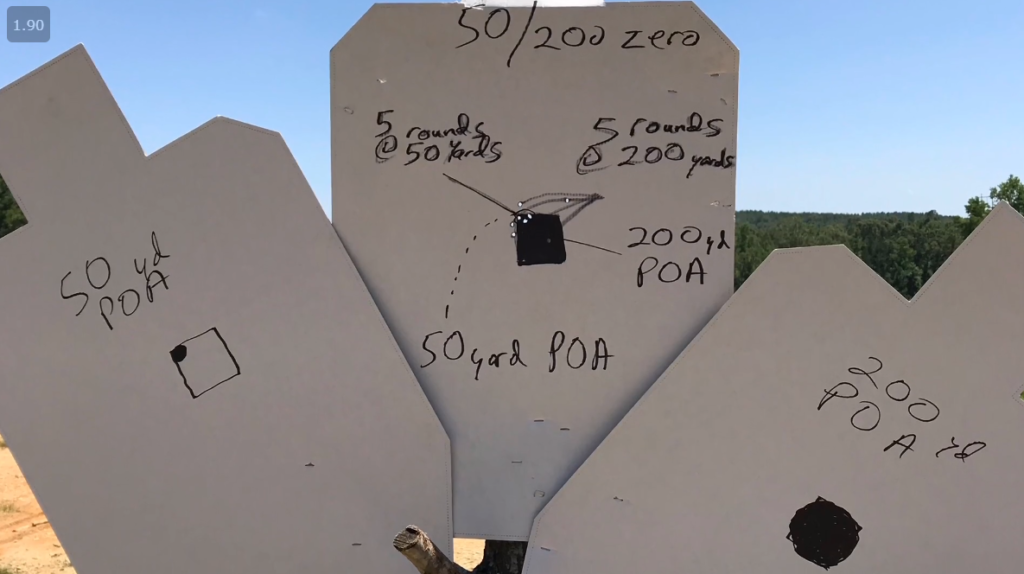
Lunch was on your own and there’s a gas station maybe a mile or two up the road that has your usual gas station food/snacks/drinks. Great place to grab some water, etc.
After lunch we hit the “Escalade” range and started shooting. As promised, there was plenty of natural terrain to practice various shooting positions from, such as big rocks and boulders of various sizes, the Escalade SUV, a car, a small hill, multiple vertical “tree trunks”, etc. Frank explained how to get the most accuracy out of these positions, emphasizing stability and gave some demos of how you could shoot and move, using the terrain to your advantage. Here’s a video overview of this particular range from Frank’s Instagram:
It’s important to note that this wasn’t your typical class where the instructor has a line with everyone ready to go and is running drill after drill and micro-managing the whole process. At least with this class, Frank used a very “hands off” approach and would demonstrate a drill or a concept and let you work through it on your own repetitions. I thought this was a nice way of running this particular class, it gave everyone the time they needed to work through things on their own, take a break when needed, take turns on each piece of terrain, etc.
After everyone had been through firing a few times, getting used to the positions, Frank went over some finer points of making hits at distance. He covered some info about zeros, bullet drop, and how that would vary for everyone. At some point, he also setup a spotting scope behind the line and showed how to get prone and use your magazine as a monopod, along with some natural terrain to really get stable and that’s where I and most of the students shot for the 500yd+ targets from.
As you can see from the picture below (from Franks Instagram @FrankProctorShooting – the Escalade range has 21 berms and 65 targets just on this one range. All of the targets are C-zone size steel or smaller. Each berm had a letter and most of the steel targets were varying sizes, shapes or colors, so it made for some good training where you had to use your brain while shooting, under stress, with a rifle in your hand – you had to find the right berm, select certain targets by color or shape (more magnification in your scope really helps for target ID!), remember the range they were at, holdoff correctly if needed, and get your hits:
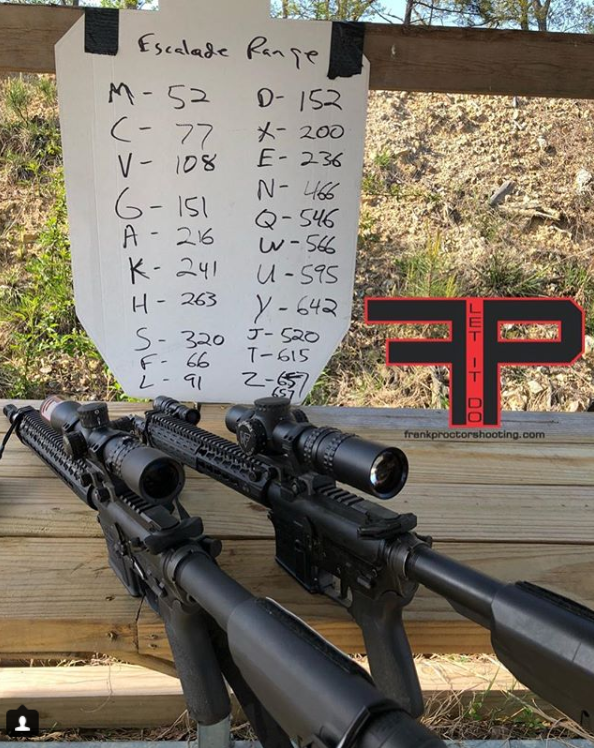 After a number of drills, more teaching from Frank, and more drills and shooting, more and more students were going for the long-distance shots that really required a spotter to help you get on target due to the wind. At that point, to keep the class moving, Frank took the half the class that had shot with a spotter already, and took them to another part of the range. As shown in the video below, on this range, you have a van to work out of and shoot some different ranges from CQB all the way out to what I believe was 300+ yds.
After a number of drills, more teaching from Frank, and more drills and shooting, more and more students were going for the long-distance shots that really required a spotter to help you get on target due to the wind. At that point, to keep the class moving, Frank took the half the class that had shot with a spotter already, and took them to another part of the range. As shown in the video below, on this range, you have a van to work out of and shoot some different ranges from CQB all the way out to what I believe was 300+ yds.
By this time, it was late in the day, and I had already shot longer than I ever have with my AR-15. As I said before, I’ve never had access to a range greater than 100yds, yet I was making hits all morning from 50-400yds or so. I was excited to get some longer-range work in and go for the 600yd targets. For me, and the rifle I was shooting (14.5” barrel) and ammo (55gr), I had no problem from 50-320yds. With the 50/200 yard zero Frank recommended it was literally as easy as “see the target, put the dot on the target, press the trigger, hit the target”. That was nice. Past 320yds, for my skill level, it became a little harder. The good news was the BDC reticle in my Strike Eagle 1-8x power scope was dead on for my rifle/ammo, meaning all the hashmarks matched up to the distance they were supposed to, so elevation was no challenge. However, while it was a nice, sunny day, it was also windy. And when you get past 400-500yds, there is wind way down near your targets that’s blowing a different direction than the wind right next to you – all that made it challenging for me. 400yds was pretty easy with the spotter, but I remember it took a few tries to get my first hit at 500yds, and it felt like it took about half a magazine to get a hit at the 615yd target. But I did get it! And it should be noted, I could see the impact in the dirt near the target when I missed, and it was right next to the C-zone teal targets – meaning they were very close misses on a small target. I was really, REALLY impressed with the performance of 55gr ammo out of an AR-15 at that distance, I had no idea it was that capable. Like I said, I really wish I had brought some heavier ammo made for accuracy just to see the difference that it would have made in the wind, and I’ll do that next time.
Not long after that, the day was wrapping up. I don’t think I actually got to shoot at all on the other range with the van, which was a little disappointing but not too much, because by that point, I had shot from so much various terrain that it wasn’t a big deal. If I was shooting from a vehicle, I would use the same principles and get my hits. Tactics might change if you were defending yourself from inside a vehicle, but this wasn’t a tactic’s course.
The day wrapped up with us meeting back at the clubhouse where Frank bought everyone some pizza and answered any more questions from the students and just generally hung out and made himself available to talk. I thought that was a great way to end things.
Final Review…
Here are my final thoughts in no particular order…
- You most definitely want a low-power variable scope fort his course. Frank explained that the steel at 125yds and in is really beat up, and has almost no paint, because all the guys that come out with red dots can basically only see that far. You can hit what you can’t see. Even 1-4x is on the low end of what you should bring. I recommend at least 1-6x or 1-8x would be even better.
- This is not a beginner course. There was very little instruction on the basic firing positions and how to actually shoot a rifle. You should come with basic carbine handling skills already mastered, and of course, be good at being safe with your rifle (finger off the trigger till sights are on target and ready to shoot, use the AR-15 safety when sights come off target, etc)
- Frank is an excellent teacher and really knows his stuff. His special forces background – where he was a NCOIC for the Sniper program and Primary instructor for Combat Marksmanship — combined with his competition shooting background makes him a wealth of knowledge.
- I enjoyed the laid back, 1-day vibe of the course… but I still kind of wish it was 2-days. That’s kind of biased of me, because I flew in from out of town, for reason one. The second reason why is because Frank has such a great training center. In my mind, you could zero then do CQB and close-range stuff the first day (Frank has an actual shoot house on the property), along with some work out of the vehicles, etc. Get to zero and work through the up-close stuff first and then on day 2 it could be all mid-long range shooting. An alternative could be Frank has both a 1-day close/CQB rifle course and the current 1-day mid/long range rifle course, but have them run on back-to-back days. That way a student could decide to take them both together or just one or the other.
- It was hot and sunny when I went. There is cover on the range, but you’ll still get baked by the sun. I wore shorts and that was a mistake due to all the prone shooting and various positions on the ground in the natural terrain. This may be a small point to make, because I was the only one who made the mistake of wearing shorts!
- After Frank shot my rifle on the chronograph he said something to the effect of “That trigger aint helping you out!” I had a standard mil-spec trigger and I know next to nothing about triggers, so I thought it wasn’t that bad. Since returning from the course, I bought the 3.5lbs flat-faced CMC trigger Frank has used and recommends and I’ve been running it. It is a nice trigger and I could see how upgrading this one part could really make a difference in shooting “Fast, accurate and easy”
Overall, I highly recommend the Mid/Long ranger rifle shooting course with Frank Proctor. If you want to get some good training from an expert in the topic, I recommend this course.


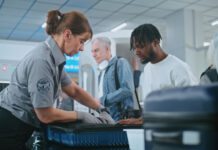

![How Many Shots Will It Take? [Video]](/wp-content/uploads/2025/06/Depositphotos_2724272_S-218x150.jpg)
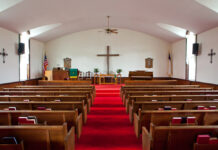



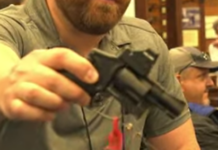
![What Level Holster Should You Be Using? [Video]](/wp-content/uploads/2024/04/Depositphotos_44548439_S-218x150.jpg)

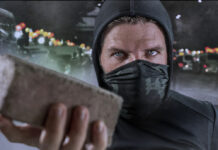
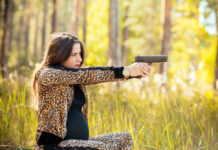
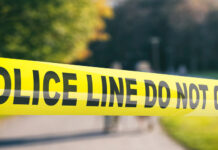
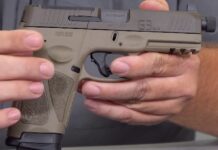

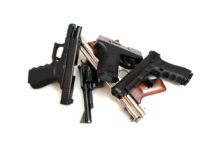


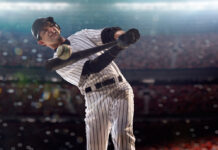
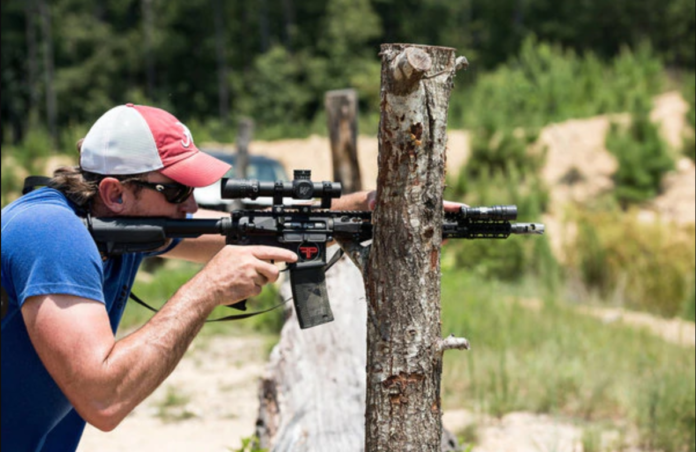
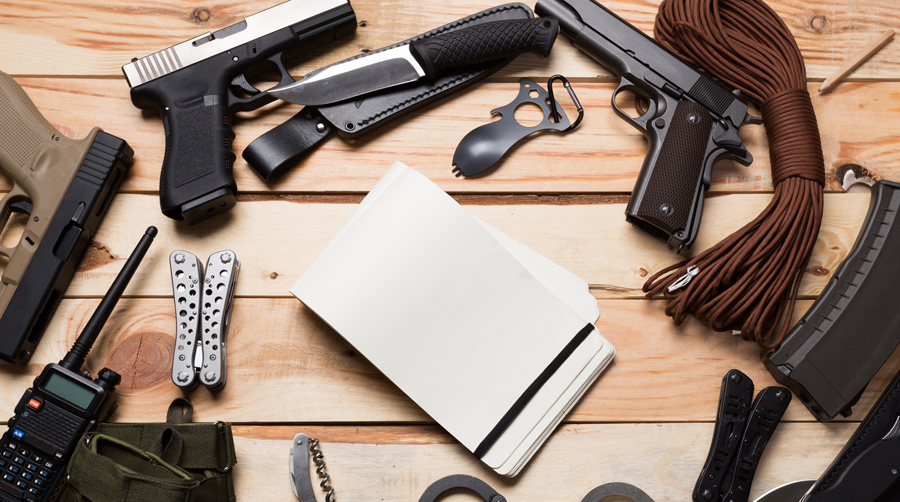









![Optic Ready vs Milled slides? [Video]](/wp-content/uploads/2024/02/image-3-100x70.png)
![[Checklist] What Gear You Need To Take Pistol, Rifle & Shotgun Training Courses [Video]](/wp-content/uploads/2023/07/Depositphotos_275087632_L-100x70.jpg)
![What is in Carter’s 2023 EDC? [Video]](/wp-content/uploads/2023/07/Depositphotos_146856137_L-100x70.jpg)


